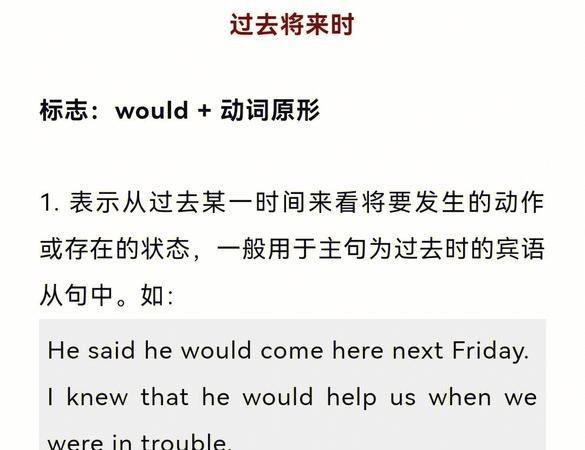过去将来时的三种形式包括:1)would + 动词原形,表示过去某个时间点后会发生的动作或事件;2)was/were going to + 动词原形,表示过去某个时间点后本来打算发生但未实现的动作或事件;3)过去进行时,表示过去某个时间点后正在进行的动作或事件。

第一种形式:would + 动词原形
这是最常见的过去将来时形式。它表示过去某个时间点或某个时间段之后会发生的动作或事件,通常用于表示假设、意愿、请求、建议、习惯等。
例如:
- If it rained tomorrow, I would stay at home.(如果明天下雨,我会呆在家里。)
- He said he would come to the party tonight.(他说他今晚会来参加派对。)
- Would you like some tea?(你想喝点茶吗?)
第二种形式:was/were going to + 动词原形
这种形式表示在过去某个时间点或某个时间段之后本来打算要发生的动作或事件,但最终未能实现。它常常用于表示打算、计划、预测等。
例如:
- We were going to have a picnic yesterday, but it rained.(我们昨天本来要去野餐,但下雨了。)
- She was going to take the train, but she missed it.(她本来要坐火车,但她错过了。)
- I was going to call you last night, but I forgot.(我昨晚本来要给你打电话,但我忘了。)
第三种形式:past continuous tense
这种形式表示过去某个时间点或某个时间段之后正在进行的动作或事件,通常用于描述一个过去的场景或情境。
例如:
- At 7 o'clock last night, I was watching TV.(昨晚7点钟,我正在看电视。)
- When I saw him, he was walking in the park.(当我看到他的时候,他正在公园里散步。)
- They were talking on the phone when the power went out.(停电时他们正在打电话。)

